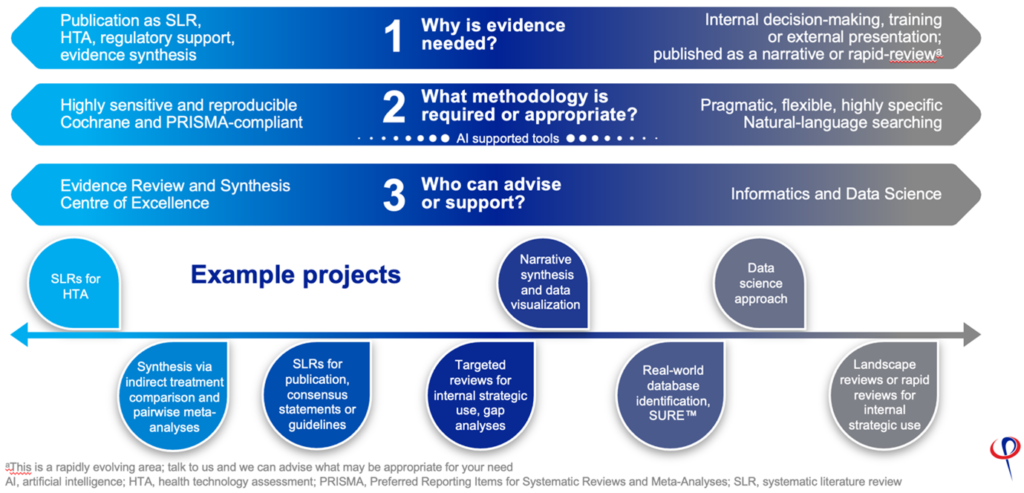Keeping evidence current: living systematic reviews
07 December 2022
Share this page
To ensure that patients receive optimal healthcare, clinicians rely on the best available evidence, which is often synthesized in a systematic literature review (SLR) or meta-analysis. The problem is that research never stands still, so new findings are constantly being published. This means that unless an SLR is continually updated, new findings may remain buried in the publication noise. In fact, primary study results take between 2.5 and 6.5 years to be included in an SLR.1 Moreover, by 2 years after publication, unless an SLR has been updated, nearly a quarter of them are missing new evidence that would substantively alter clinical practice:1 enter the living systematic review.
A living systematic review is an SLR that is continually updated, incorporating new evidence as it becomes available. Cochrane, who have led the way in best practice for SLRs, first released guidance on living systematic reviews in 2017 (updated in 2019), recommending them in areas of high priority or uncertainty, or in which evidence is emerging. Although uptake was initially slow, the concept has gained traction in response to the COVID-19 pandemic. However, recent research by the York Health Economics Consortium has shown that, owing to the additional resources required to keep a review ‘live’, many living systematic reviews have not been maintained.2 A potential solution to this challenge is the incorporation of technology, such as automation and artificial intelligence (AI).
The introduction of technology to ease the burden on human analysts is a work in progress that is gaining much attention and ranges from the simple to the complex. For example, literature database searches can easily be automated so that push notifications are sent when new studies are published. At Oxford PharmaGenesis, our Informatics and Data Science team and our Evidence Review and Synthesis Centre of Excellence are using AI to help analysts more efficiently screen titles and abstracts, a process known to be labour-intensive; crucially, all decisions remain in the hands of the human. We are also researching the use of AI to extract key information from publications, such as trial population size, information about interventions and clinical outcomes. A key element of both SLRs and living systematic reviews is an engaging, interactive and easily updatable presentation of the results; an area in which our expertise at building data dashboards is invaluable.
At Oxford PharmaGenesis, we have the expertise and tools required to choose the right approach across review, synthesis and visualization options, including living systematic reviews, and deliver this work to a high standard. We understand that living systematic reviews are often a component of a larger living evidence product, for example, living clinical practice guidelines or clinical decision support systems. Please feel free to get in touch at evidencereview@pharmagenesis.com.

1. Elliott JH, Turner T, Clavisi O, et al. Living systematic reviews: an emerging opportunity to narrow the evidence-practice gap. PLoS Med 2014;11:e1001603. doi:10.1371/journal.pmed.1001603.
2. Carr E GE, McCool R, Sanderson A, Wilson K, Arber M. The proliferation of living systematic reviews (LSRs) – dead on arrival? A review of LSR methodology. Presented at ISPOR Europe 2022, 6–9 November 2022, Vienna. Austria.
